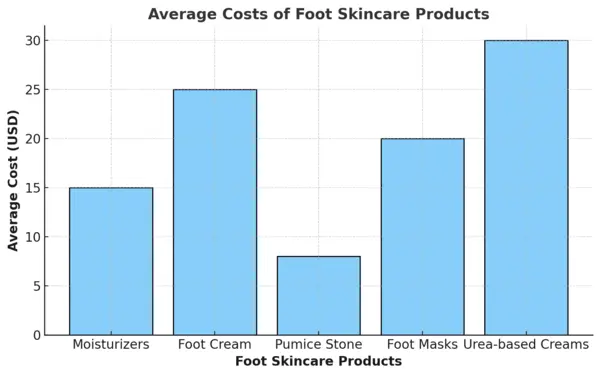Cracked heels and dry, non-healing skin on the feet are common problems that can cause both discomfort and aesthetic concerns. These issues are not only frustrating but can also lead to complications if untreated. In this article, we’ll delve into the causes, treatment options, and preventive measures for cracked heels, supported by reliable statistics and practical advice.
How Common Are Cracked Heels?
Cracked heels, medically known as heel fissures, are more common than many might think. Recent studies estimate that around 20% of adults experience cracked heels at some point, with the incidence rising to 40% among older adults. Women are more likely to be affected compared to men, largely due to lifestyle factors, footwear choices, and hormonal differences. It’s also prevalent in people who spend long periods on their feet or who wear open-heeled shoes.
Common Causes of Cracked and Non-Healing Skin
| Causes | Description |
|---|---|
| Dry Skin (Xerosis) | Lack of moisture is a leading cause of skin cracking. |
| Obesity | Excess weight puts pressure on heels, leading to fissures. |
| Prolonged Standing | Especially on hard surfaces, which adds stress to the feet. |
| Ill-Fitting Footwear | Open-heeled shoes can exacerbate dryness and cracking. |
| Medical Conditions | Conditions like diabetes, hypothyroidism, or eczema can lead to chronic dryness. |
Why Skin on Heels Cracks and Does Not Heal
Cracked heels are often more than just a cosmetic issue. The outer layer of the skin, the epidermis, loses its ability to retain moisture, leading to dryness and cracking. When the skin becomes excessively dry, it loses its elasticity, making it prone to splitting, especially under pressure.
Certain medical conditions can worsen this scenario. For instance, diabetes affects blood circulation, reducing the supply of essential nutrients to the skin, thereby delaying the healing process. People with hypothyroidism may experience reduced sweating, which also contributes to chronic dryness.
Costs Involved in Treatment
Treatment options for cracked heels range from over-the-counter creams to professional medical procedures. Below is an overview of the cost of various treatment options in the United States:
| Treatment Option | Average Cost (USD) |
|---|---|
| Over-the-Counter Creams | $10 – $25 |
| Prescription Ointments | $30 – $60 |
| Professional Pedicure | $35 – $70 per session |
| Podiatrist Consultation | $75 – $150 per visit |
| Custom Orthotics (for support) | $200 – $500 |
Best Practices for Prevention
- Moisturize Regularly: The simplest and most effective prevention measure is moisturizing the feet daily. Emollients containing urea, shea butter, or glycerin are particularly effective in keeping the skin hydrated.
- Wear Proper Footwear: Closed, cushioned shoes can provide better support and reduce the risk of cracking. Avoid wearing flip-flops or open-heeled sandals for prolonged periods.
- Stay Hydrated: Drinking enough water can help maintain moisture levels in the skin, although topical hydration is also necessary.
- Exfoliate Gently: Removing dead skin cells using a pumice stone a few times per week can prevent the buildup that leads to cracks. It’s important to avoid over-exfoliation, which can worsen the condition.
Medical Example: A Podiatrist’s Perspective
Consider the case of a 55-year-old patient with diabetes who presented with deep heel fissures that bled occasionally. Due to his diabetic condition, the healing process was prolonged, and conventional moisturizers were insufficient. The patient was advised to use a prescription ointment containing 10% urea, which improved hydration significantly. In addition, custom orthotics were provided to offload pressure from the heel area, reducing the frequency of cracks.
This example highlights the importance of tailoring treatment based on underlying conditions. In severe cases, consulting a healthcare professional is vital to prevent complications like infections.
Prevalence of Cracked Heels and Foot Skin Issues
Emerging Trends and Products
The foot care market has seen a surge in the availability of specialized products that address cracked heels. Urea-based moisturizers, for example, are increasingly recommended by dermatologists for their effectiveness in breaking down hardened skin while retaining moisture. Foot masks—similar to facial sheet masks—are also becoming popular for delivering intensive hydration overnight.
Advice from Our Editorial Team
If you’re dealing with cracked heels, addressing the problem sooner rather than later is crucial. Start by moisturizing daily and switching to more supportive footwear. For persistent cases, consult a podiatrist to rule out underlying medical issues. Remember, your feet support you all day; taking care of them is an investment in your overall health.
Cracked heels are a common issue, but with the right care, they can be managed effectively. Whether you opt for over-the-counter creams or more specialized treatments, consistency is key. Prevention is always better than cure, so taking simple daily steps can go a long way in keeping your feet healthy.









